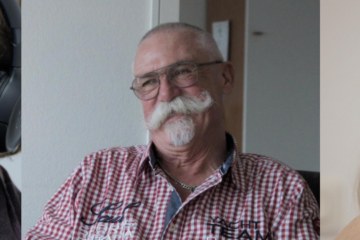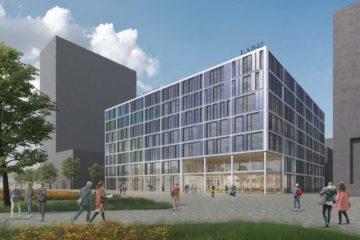The jury has selected six candidates for the new Real Estate Market Innovation Award 2021 powered by ING. These are: House File, IBIS Power, Planalogic, Spectral, Sweco and 3DUniversum.

‘A rich harvest! The jury is delighted with the large number of 37 entries for this new Award. It also indicates that a lot of innovation is taking place in our sector,’ says jury chairman Huib Boissevain.
Six candidates
After careful selection, six candidates emerged. On Thursday, October 14, they will compete in a pitch for the three places for the nominees. The final winner will be announced during the National Real Estate Dinner on November 17 in Rotterdam.
Huisdossier
Het Huisdossier is the personalized platform for homeowners for home improvements. It gives homeowners control over the increase in house value as a result of sustainability, renovations and good maintenance by recording this. The value increase calculation tool calculates the home value increase.
Het Huisdossier is more than a maintenance booklet for homes: it connects homeowners and relevant parties such as mortgage lenders, builders, sustainability consultants and contractors. In this way, reliable data exchange can take place under the direction of the homeowner. For partners it is also a sales and service platform. Partners can build up a relationship with homeowners and advise them in the area of home improvements in the purchase, housing and sales process.
Het Huisdossier is used by parties such as VVE’s, real estate agents, sustainability consultants, builders, contractors, handymen, maintenance companies, insurers, banks, mortgage lenders, appraisers / building surveyors and municipalities to enable and monitor sustainability and proper maintenance of existing homes.
Ibis Power
PowerNest from Ibis Power consists of an integrated combination of wind and solar energy that eliminates all the shortcomings of existing technologies by providing 24/7 available renewable energy, designed specifically for buildings five stories or higher with a flat roof. With a single roof assembly that lifts the roof area 4.8 meters and extends one meter over the façade on all sides, it generates as much and as efficiently as possible renewable energy without causing inconvenience.
Smart aerodynamic technology is integrated into the structure and provides a 160 percent accelerated wind flow to the turbines resulting in a four times higher annual output in wind energy generated. The same wind used to cool the solar panels and increases their annual output by up to 15 percent. The elevated construction allows the effective application of bi-facial solar panels that generate 20-30 percent more solar energy than conventional solar panels.
With these technological advantages and spatial configuration, PowerNest modules are capable of delivering six times more energy than conventional rooftop solar panels.
Planalogic
Planalogic is a design and decision-making platform that uses artificial intelligence to find the best performing designs from millions of versions. The synergistic approach enables property owners, developers and investors to develop sustainable and affordable cities.
The platform creates a paradigm shift by making data-driven analysis the core of a real estate development process. By running millions of options, scenarios can be tested and the complex interaction of different input variables (such as energy, cost, layout, sunlight, GRESB) can be analyzed. This allows users to make decisions based on hard data in a very short period of time.
Planalogic has been commercially active in the Dutch real estate market for just one and a half years. In that time, it says, “the majority of the largest housing developers have become customers, we have reduced project lead times by 85 percent, reduced construction costs by an average of 16 percent, improved the energy consumption versus generation ratio by 21 percent, and significantly increased GRESB scores.
Spectral
Spectral’s Smart Building Platform (SBP) collects data from various sources and brings it together in one environment. This gives property owners insight into the performance of their portfolio, regardless of who/what the primary data source is. Algorithms provide insight into unnecessary energy use, expected energy use. The CRREM analysis and GRESB reporting function are also part of the SBP.
However, insight does not yet bring energy savings/ CO2 reduction. Action is also needed. This can be done by linking to the building management system and taking over control. By adding extra data sources (like weather) the (self-learning) algorithms can proactively change the settings. This improves comfort and saves a lot of energy (CO2).
The strength of the solution is that it is perfectly applicable for existing buildings and gets the maximum performance from the existing installation(s)/situation. No major investments for adaptations/renovations are immediately required. Decisions for sustainability and/or comfort improvements can be made based on the insight from the SBP.
Sweco
Residential investor Vesteda called in Sweco to gain insight into the risks and impact of climate change on its entire housing portfolio of 30,000 homes. This looked at environmental risks and the influence of the home on the actual climate risks for the resident.
Sweco devised the Climate Risk Identification & Management (KIM) tool that incorporates building-specific characteristics into the risk calculation and recommends cost-effective measures based on the risk profile. This includes, for example, vulnerability to heat stress or extreme rainfall.
In addition to the risks, the tool also maps out the action perspective. So what measures can you take to manage those risks? For example, if you install sun blinds or raise a threshold, how will that affect your risk score? In this way you can also calculate what the costs are, not only the investment costs but also the maintenance costs. And that, of course, is very relevant for a real estate investor like Vesteda.
3DUniversum
3D scanning offers a solution for measuring, photographing and visualizing real estate. However, 3D scanning devices quickly cost tens of thousands of euros and are therefore not for everyone with prices ranging from €5,000 to €50,000. WeScan from 3DUniversum makes 3D scanning possible with an iPhone or iPad.
The product offers an all-in-one solution for digitizing buildings. This includes, for example, measurement reports, VR, AR, automatic object detection, 360 panorama, online 3D walkthrough, online measurement tools, and automated videos. The AI technologies help users to carry out a digital transformation of their spaces so that they can easily manage them online.
By digitizing buildings, companies can easily track their assets. Maintenance schedules can be predicted and linked to material and energy usage. weScan eliminates the need to maintain hundreds of documents, allows relevant information to be shared quickly and found quickly by all staff. These capabilities help control operating and energy costs, understand usage and develop future space and usage requirements.


